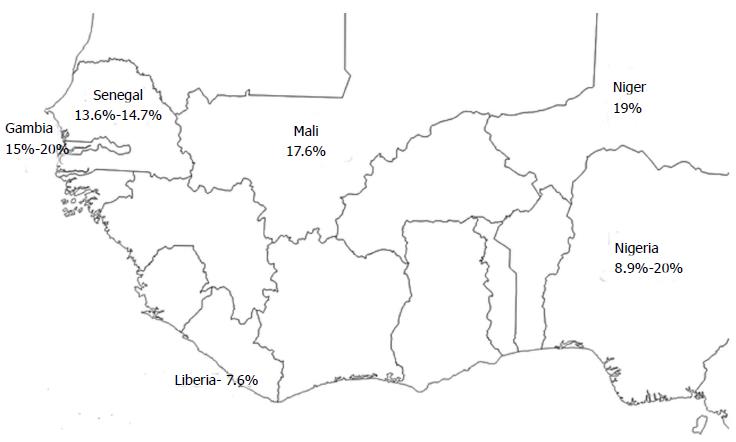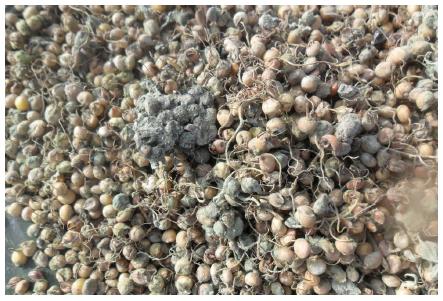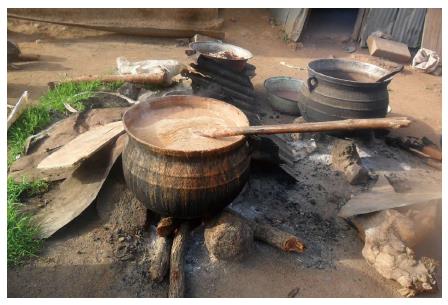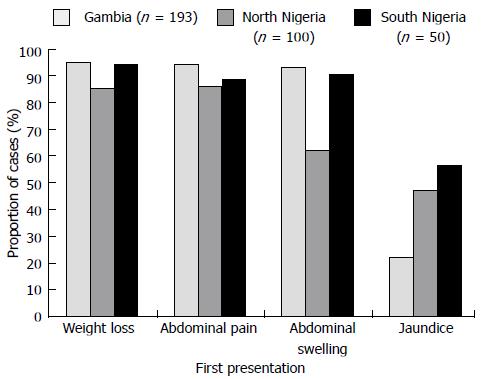Copyright
©2014 Baishideng Publishing Group Inc.
World J Hepatol. Nov 27, 2014; 6(11): 783-792
Published online Nov 27, 2014. doi: 10.4254/wjh.v6.i11.783
Published online Nov 27, 2014. doi: 10.4254/wjh.v6.i11.783
Figure 1 Multiple clustered bar charts labelled by incidence and mortality rates per 100000 population of West African countries (data from Globocan 2012 from International Agency for Research on Cancer[54].
Figure 2 Prevalence of hepatitis B surface antigen carriage in some West African countries.
Figure 3 Fungus-infested malt, a product of cereal used in the fermentation of local alcohol beverage “burukutu”.
Cereals are widely consumed in West Africa and are a source of aflatoxin, which has been shown to potentiate the hepato-carcinogenicity of hepatitis B virus (Picture by Pantong Mark at Jos, Nigeria).
Figure 4 Iron pots used in brewing local beer in a typical West African setting (Picture by Pantong Mark, Jos, Nigeria).
Figure 5 Summary of most common clinical presentations of hepatocellular carcinoma in three West African communities: Gambia, Northern and Southern Nigeria.
Note the similarity of clinical presentation in three study sites in two countries in the region. Number of hepatocellular carcinoma patients in parentheses.
- Citation: Ladep NG, Lesi OA, Mark P, Lemoine M, Onyekwere C, Afihene M, Crossey MM, Taylor-Robinson SD. Problem of hepatocellular carcinoma in West Africa. World J Hepatol 2014; 6(11): 783-792
- URL: https://www.wjgnet.com/1948-5182/full/v6/i11/783.htm
- DOI: https://dx.doi.org/10.4254/wjh.v6.i11.783













